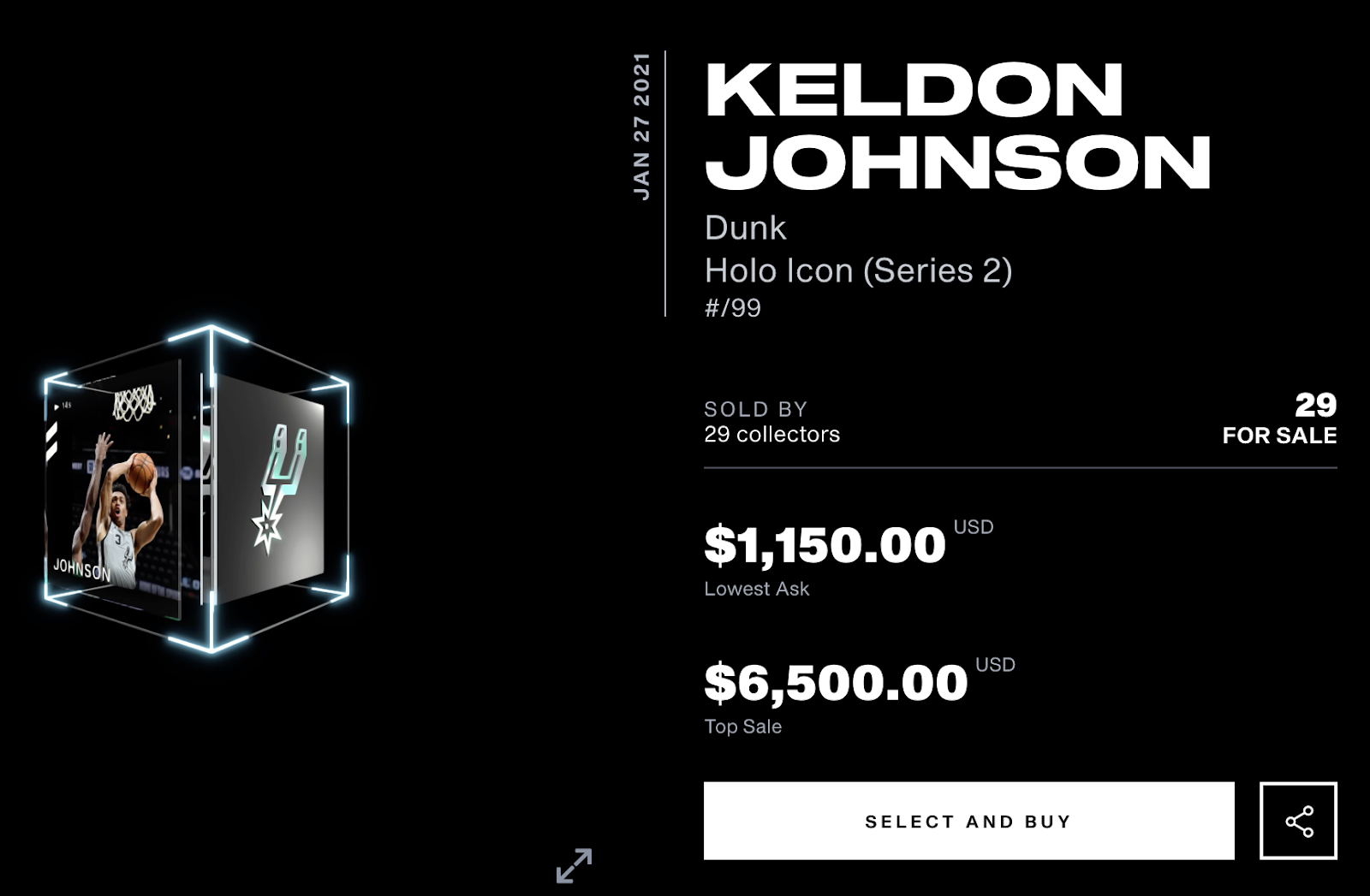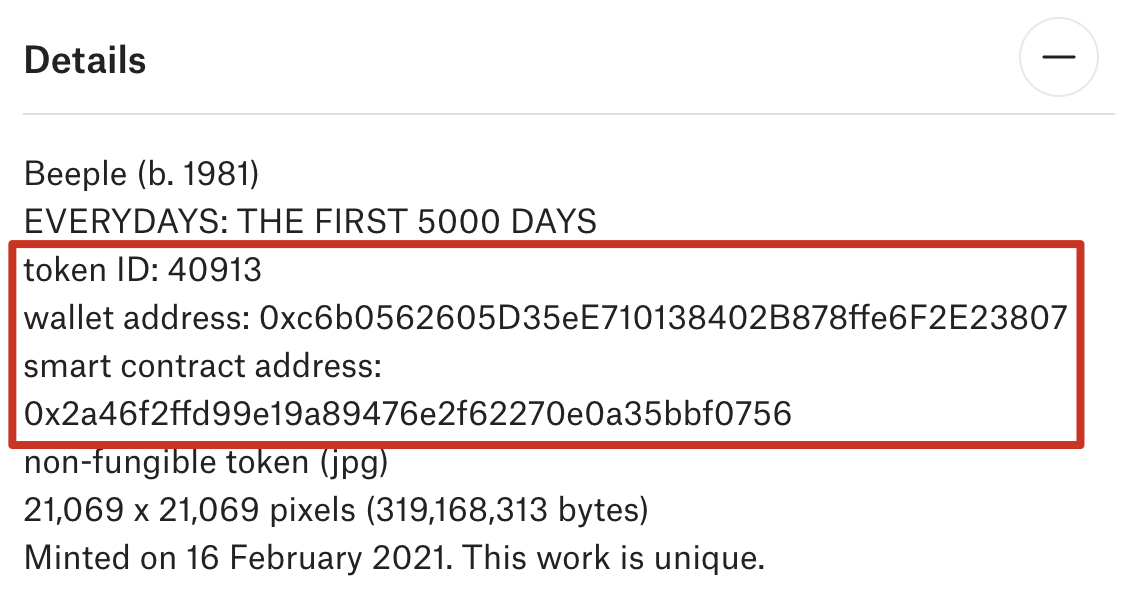TL;DR
NFTs are tokenized, collectible items valued for their uniqueness and rarity, popular on BNB Chain and Ethereum. The value of NFTs relies on their authenticity and scarcity, so it can be helpful to take a closer look at the token on a blockchain explorer.
NFTs have more use cases than just crypto art, and BNB Chain now has an innovative non-fungible token ecosystem. Due to the recent popularity of NFTs in the news and huge selling prices, it’s easy to see similarities with the 2017 ICO craze. But the two are, in fact, very different things.
To understand more, we cover the basics of NFTs based on common misconceptions and frequently asked questions.
Introduction
When it comes to non-fungible tokens (NFTs), art and collectibles are never too far behind. These unique tokens are making waves with huge sales of graphic designers and visual artists. Artist Beeple is one of the most popular examples. His NFT called "Everydays - The First 5000 Days" was auctioned for roughly $69 million.
NFTs are hugely popular, but the topic goes much deeper than just newspaper headlines. Understanding and exploring the world of NFTs is the next step to take if you want to dig a bit deeper. There are many places to find them, use cases to look at, and even misconceptions to clear up.
What is an NFT?
An NFT is a cryptoasset representing something unique and collectible using blockchain technology. The NFT could be in demand because it has been created by a famous artist or composed by a world-class musician. The token could also be helpful in a game or wanted to complete a collection.
You may have already heard of NBA Top Shot, a digital collectible basketball card game. The cards work just like physical trading cards do, but their authenticity is guaranteed through blockchain technology. Some cards are rarer than others, and each has a different value.
Simply put, a non-fungible token cannot be faked or copied. If we look at the definition of fungibility, we can learn a bit more about what makes an NFT special:
Fungibility is an asset’s ability to be interchangeable with assets of the same type.
One bitcoin is equal and tradeable for another bitcoin. A #1/99 Keldon Johnson Holo Icon Top Shot card, on the other hand, is not interchangeable as only one exists.

What can I do with an NFT? Are they tradeable?
NFTs come in all shapes, sizes, and even use cases. Purely collectible digital art NFTs are pretty limited in what you can do with them. You can trade them, of course, but an NFT of a photo isn’t much different from a regular print in terms of utility.
Still, some NFTs have actual uses in games, like the famous CryptoKitties on the Ethereum blockchain. In this case, a collectible cat can breed to pass its traits down onto new cats.

NFTs are commonly used by financial platforms too. There is a massive market for PancakeSwap’s NFTs that are artistic and convertible into cryptocurrency. This unique combination means that people can speculate on the future price of the cashable amount.
These NFTs all have in common the ability to trade them for different digital assets. This means you can buy or sell NFTs using ETH, BNB or other cryptocurrencies. Still, each piece of NFT is unique (i.e., they are not interchangeable).
How is the rarity and value of an NFT determined?
Determining how much an NFT is worth depends on what it represents. When it comes to crypto art, it’s quite similar to any other kind of art. We need to think about who created it, the artistic value of the piece, and how in-demand it might be from other collectors.
If an NFT is part of a limited run or series, specific numbers are often more valuable than others. We usually see #1 as desirable and other numbers people find collectible like #13 or #7. Value and rarity depend on a combination of factors, like the ones mentioned above. You can see from these Top Shot NFTs how their ranking affects the price.

For game-based NFTs, there may be financial benefits from specific NFT items or creatures. If they provide you with an extra $100 in staking rewards, then it’s going to be worth at least $100 without taking into account its artistic value.
PancakeSwap’s NFTs are slightly different. Some of their tokens can be converted into CAKE - the platform’s cryptocurrency. So if, for example, your cuddly rabbit can give you 10 CAKE and the price of CAKE is $20 (USD) per token, then your NFT is worth at least $200.
Where can I find NFTs?
If you want to explore NFTs on offer, there are a few different places to start looking. NFT marketplaces have a variety of non-fungible tokens on sale, from both famous artists and amateurs. There are loads out there to choose from, but some of the biggest are OpenSea for Ethereum-based NFTs and Treasureland or BakerySwap for BNB Chain-based NFTs.

The number of marketplaces keeps growing, and some are more specialized than others. If you are interested in buying something from a famous artist, make sure to check and see how genuine the marketplace is. You can also find NFTs by playing blockchain games or participating in decentralized finance (DeFi) projects.
What are the main NFT projects on BNB Chain?
BNB Chain benefits from a healthy NFT community on the blockchain, and it’s not all art and marketplaces either. There are NFT games and even collectibles with staking or financial benefits.
As mentioned before, BakerySwap and Treasureland are two of the largest NFT exchanges. BakerySwap also allows you to create NFTs quickly and for a reasonable price. When it comes to the art and creative side of NFTs, these are great places to start.
There are also blockchain games like Battle Pets and DeFi protocols experimenting with NFTs in more financial ways. PancakeSwap takes the number one spot for traded NFTs on Treasureland, making it a massive project for NFT usage. You can find out more info on these NFT projects by following the link.

Are NFTs the new ICO?
In short, no. While there are some slight similarities in the money NFTs raise and their recent hype and popularity, that is as far as it goes. An initial coin offering (ICO) is a method used for project fundraising by selling project tokens. It rose to popularity around 2017 and became infamous for the number of scams and failed projects taking part.
It’s easy to see why some people might get the idea that NFTs are similar to ICOs. Recently these digital collectibles have sold for millions of dollars. They are also all over the news and seen as an opportunity to make some “easy money” with crypto. These two points are where the similarities between the two end. Still, it’s crucial that you do your own research before risking your funds because not all projects are legit.
How do you verify the authenticity of an NFT?
Proving that your NFT is legitimate can be a bit tricky, depending on what you’re looking for. No doubt people are uploading other artist’s work and pretending to be them. In this case, you would have to get in touch with the artist to confirm they are selling NFTs of their work.
An NFT’s creator should supply you with some kind of identifier for you to check. Most of the work will involve looking at your NFT on a blockchain explorer such as BscScan. When it comes to blockchain, we take a “don’t trust, verify” approach.
Helpful information could include the minting date and the wallet address that minted the NFT. You could also use the transaction history ID to see if your NFT matches up. This method is better than just checking the image or file associated with your collectible. If we look at the digital artist Beeple’s recent sale, Christie’s has given the token ID, token contract, and wallet address for validation.

There is sometimes a URL to the file or an IPFS link to verify its underlying content. Both, however, can be used by someone else when creating a fake token. In most cases, you’re best off checking with the creator first.
Closing thoughts
When it comes to NFTs, new use cases and developments are constantly coming out. It’s easy to forget that the technology is as recent as 2017 and still in its infancy. Before you start investing money into these tokens, make sure you understand precisely what you’re getting into and how to use them. It’s easy to just think of NFTs as art, but there is a whole world of projects using them in different ways.
Disclaimer and Risk Warning: This content is presented to you on an “as is” basis for general information and educational purposes only, without representation or warranty of any kind. It should not be construed as financial, legal or other professional advice, nor is it intended to recommend the purchase of any specific product or service. You should seek your own advice from appropriate professional advisors. Where the article is contributed by a third party contributor, please note that those views expressed belong to the third party contributor, and do not necessarily reflect those of Binance Academy. Please read our full disclaimer here for further details. Digital asset prices can be volatile. The value of your investment may go down or up and you may not get back the amount invested. You are solely responsible for your investment decisions and Binance Academy is not liable for any losses you may incur. This material should not be construed as financial, legal or other professional advice. For more information, see our Terms of Use and Risk Warning.
